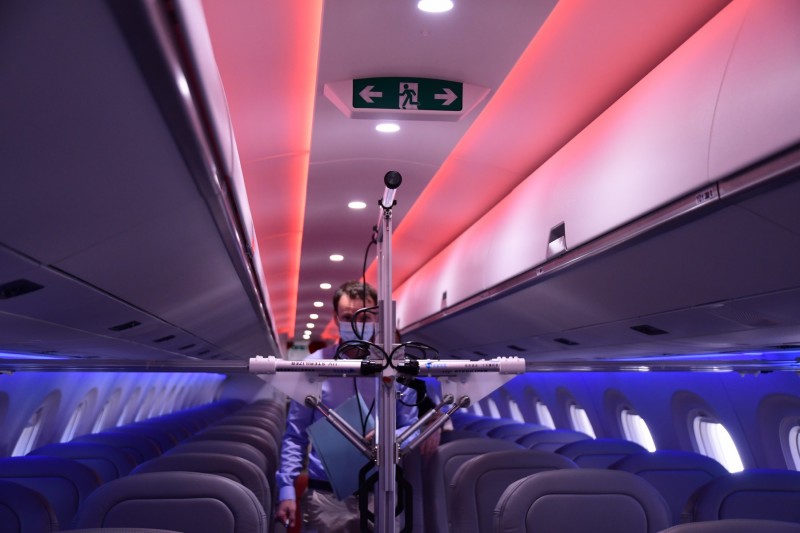The UV venture
This is a special feature from PAX Tech's February 2021 Color Schemes, Lighting and Connectivity digital edition.

Swiss regional carrier Helvetic Airways tested dnata’s enhanced cabin cleaning service
Many airlines are including the use of UV Light as part of their cabin sanitization regime because of its ability to inactivate viruses. Swiss regional carrier Helvetic Airways tested the use of dnata’s UV technology in late-2020, and among the early partners for Boeing’s UV wand was Etihad Airways in August of last year. JetBlue and Qatar Airways both deploy Honeywell’s UV cabin cleaning technology. In December, SCIS, the LSG Group’s subsidiary for security, sanitization and mobile device management, announced that it is offering a germicidal UV-C solution in partnership with SteriFlight.
UV (Ultraviolet) Light radiation refers to a region of the electromagnetic spectrum between visible light and X-rays. There are three categories of UV Light: UV-A, UV-B and UV-C. UV-C has been used for decades in disinfecting food, air and water by killing microorganisms and destroying the cell nucleic acid, explains Stanford University’s Solar Center website. And, according to the FDA (U.S. Food and Drug Administration), UV-C radiation may be effective in inactivating COVID-19 as it has been shown to efficiently and safely inactivate airborne human coronaviruses.
dnata boost
In December, dnata announced its work with Switzerland-based tech company Uveya on a proof of concept for its UV-C cabin interior sanitization technology. Previously made for use outside the industry, Uveya sought dnata as partner to bring the solution to the commercial aviation sector, in partnership with airline customer Helvetic Airways.
An autonomous, aluminum robot emits concentrated UV-C light across the cabin, effectively killing more than 99 percent of bacteria and pathogens in the air and on all surfaces within a few minutes, without the use of chemicals. Each light panel on the robot can operate for up to 6,000 hours and can easily be replaced. A mechatronic solution prevents electrical failures and ensures that the system is constantly updated, and for added security, it is activated and deactivated remotely. It automatically deactivates in case of human presence in the cabin. dnata is now working on implementing the technology across its platforms.

Guillaume Crozier, Divisional Vice President Operations and Product Development, dnata
“Customers and their passengers will continue to expect the highest level of safety even in a post-pandemic world,” Guillaume Crozier, Divisional Vice President Operations and Product Development, dnata, tells PAX Tech. “We continue to invest in advanced technologies to deliver world-class safety and provide passengers with confidence and peace of mind when they fly with our airline customers.”
Boeing UV wand
Boeing has worked with an ultraviolet laboratory for several years and was inspired to develop a portable UV wand for sanitization. Resembling a carry-on suitcase, the self-contained apparatus passes UV-C light over the cabin to inactivate pathogens in less than 15 minutes. Designed specifically for aircraft application, the device is particularly successful in compact spaces, according to the August 2020 press release from Boeing. Among its early partners was Etihad Airways.
Boeing has since entered into patent and technology licenses with Far UV Technologies and Healthe Inc., according to the website. Under the licenses, both companies will produce and distribute the commercial wand, helping airlines and potentially other industries combat COVID-19.

